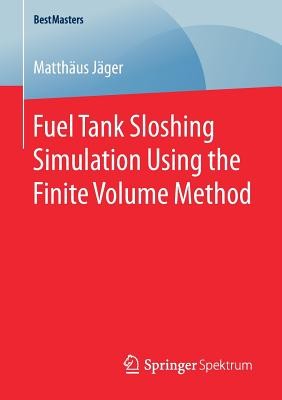
- We will send in 10–14 business days.
- Author: Matthäus Jäger
- Publisher: Springer Spektrum
- Year: 2019
- Pages: 109
- ISBN-10: 3658252278
- ISBN-13: 9783658252274
- Format: 14.8 x 21 x 0.7 cm, minkšti viršeliai
- Language: English
- SAVE -10% with code: EXTRA
Fuel Tank Sloshing Simulation Using the Finite Volume Method (e-book) (used book) | bookbook.eu
Reviews
Description
Matthäus Jäger examines the simulation of liquid-gas flow in fuel tank systems and its application to sloshing problems. The author focuses at first on the physical model and the assumptions necessary to derive the respective partial differential equations. The second step involves the cell-centered finite volume method and its application to fluid dynamic problems with free surfaces using a volume of fluid approach. Finally, the application of the method for different use cases is presented followed by an introduction to the methodology for the interpretation of the results achieved.
EXTRA 10 % discount with code: EXTRA
The promotion ends in 21d.20:18:39
The discount code is valid when purchasing from 10 €. Discounts do not stack.
- Author: Matthäus Jäger
- Publisher: Springer Spektrum
- Year: 2019
- Pages: 109
- ISBN-10: 3658252278
- ISBN-13: 9783658252274
- Format: 14.8 x 21 x 0.7 cm, minkšti viršeliai
- Language: English English
Matthäus Jäger examines the simulation of liquid-gas flow in fuel tank systems and its application to sloshing problems. The author focuses at first on the physical model and the assumptions necessary to derive the respective partial differential equations. The second step involves the cell-centered finite volume method and its application to fluid dynamic problems with free surfaces using a volume of fluid approach. Finally, the application of the method for different use cases is presented followed by an introduction to the methodology for the interpretation of the results achieved.


Reviews